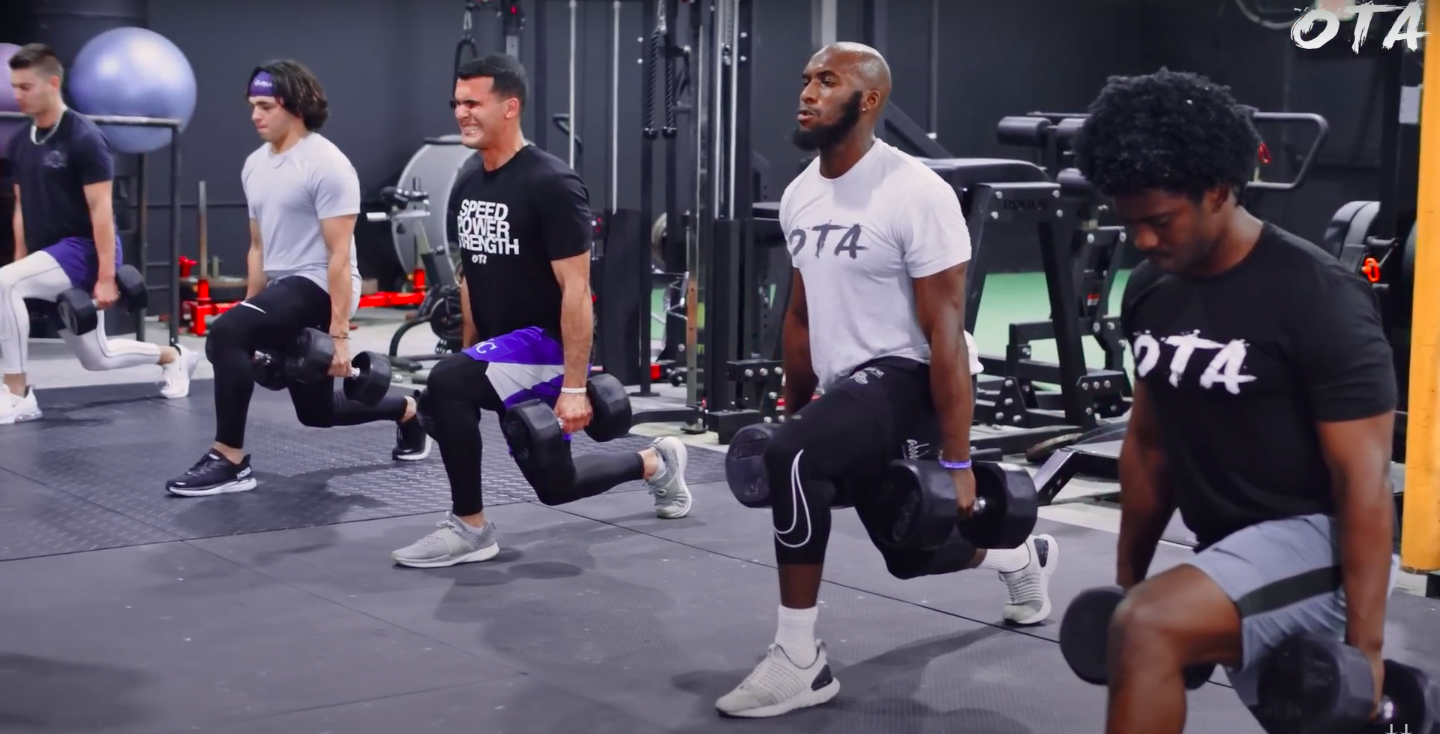Today I’m writing out a full single leg isometric workout I recently had my elite baseball athletes went through. No matter what sport you play, it’s important to go through the main phases of strength training with isometrics being a number one. We balanced it out with a few isometric focused upper body movements and ended with core.
Check it out below and follow along for your next gym session:

Single Leg Movement Prep:
Always take the time to start your workout with foundational movements. Not only does this warm up the body and increase nervous system activation, movement prep gets you in the zone and often helps transition your mindset into training mode. This is often the space in which you start moving quicker and with more body awareness. I find it to be extremely important for single leg isometric work. Go through this series of movement prep after a full warm-up.
3 rounds
- Pogo jumps x 30s
- Single leg pogo jumps x 30s
- Squat jumps x 30s
- Isometric split squat w/ dumbbells (max hold) – do this for just one max set on each side.
Single Leg Isometric Work:
1 – 2 rounds
- Split squat pulse w/ dumbbells x 30s to 1 min each side
- Alternating lunge jumps x 30s to 1 min
- Single leg box jump x 2 each side
- Single leg approach box jump x 2 each side
- Approach box jump (both legs) x 3
Check out the video below to see these pros hit the box jumps:
Upper Body Movement Prep:
1 round
- Scap push-ups x 52
- Lying pass throughs w/ band x 10
- Open books x 10 each side no resistance
- Open books x 10 each side w/ band
Upper Body Strength Training:
2 rounds each
1A. Close grip bench press x 5
2A. Banded face pull to external rotation x 10
3B. Isometric bar press x :30 max effort
4B. Isometric band row x :30 each side
5C. Chest supported Incline Row x 10
6C. Band snatch x 10
3 rounds
7D. Tricep pulldowns x 12
8D. Incline DB hammer curls x 12
9D. Club bell walk x 50yds
This workout gives you a pretty good idea of a typical training session for single leg isometric work and upper body training with athletes. For me it’s best practice to do plyometric training first while you have the most quickness and the least muscular fatigue. This session was a pretty good balance of both push and pull work to work the arms, trunk and the core.
If you’re interested in checking out a full baseball training plan for the off season to work like the pros, check out the link below: